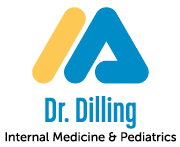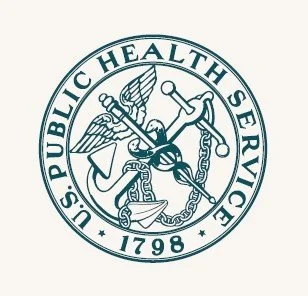Loneliness
Dr. Vivek Murthy’s Parting Prescription for America
One of the most pressing health challenges we face is not physical illness, but loneliness. Dr. Vivek Murthy, our previous Surgeon General, highlighted this issue in his recent “Parting Prescription for America,” urging us to reconsider the profound impact that social disconnection has on our well-being. So often in western medicine, we try to silo physical and mental health. Common sense and life experience clearly show us this is not the case though; the two are inextricably linked. Below are some key insights from Dr. Murthy’s advisory on connection and community, which are as vital to maintaining a healthy lifestyle as nutritious foods and regular exercise.
Loneliness as a Public Health Threat
Dr. Murthy stresses that loneliness is not just an emotional state, but a significant public health risk. He draws attention to the fact that chronic loneliness is linked to various health problems, including heart disease, depression, anxiety, and even premature death. [1] It’s not the occasional feeling of isolation that concerns experts, but prolonged and unaddressed loneliness which can be as harmful as smoking 15 cigarettes a day.
As a primary care physician in New York City, I see firsthand the challenges that our fast-paced, often disconnected environment presents. Many of my patients, even those with busy social lives, report feelings of loneliness. That strange feeling of being alone in a city of over 8 million people is sometimes nice (especially being from a town of 9,000 people and zero anonymity!) but can also be pathologic. Most of us aren’t “from here,” so there is also a component of geographic isolation from family and friends. But that's not new; the thing that’s changed more recently is the difficulty of maintaining deep, meaningful connections in a digital age.
Screens do not replace social connection. And it’s worth noting that loneliness spans the ages. There are plenty of data coming out showing the clear connection between excessive device use among adolescents and poor mental health. The same can be seen in older populations as well though - liking your friends’ posts on Facebook is not the same as sitting down to a meal together. The consequences are dire on both ends of the age spectrum; loneliness is associated with increased risk of multiple types of dementia. [2]
The Power of Social Connection
Dr. Murthy’s report emphasizes the importance of cultivating meaningful relationships and the role they play in enhancing our health. It’s not enough to merely have a wide social circle – it’s quality over quantity. Variety in friendships is important too; different relationships can fulfill different needs and give us a broader perspective. Deep, supportive relationships, whether with family, friends, or colleagues, are crucial for emotional resilience and good mental health.
“We have social muscles just like we have physical muscles,” Dr. Murthy said on a college tour in the fall. “And those social muscles weaken when we don’t use them.” In our busy lives, nurturing relationships often takes a backseat to work, family obligations, and daily stressors. Dr. Murthy suggests that we must prioritize these connections by scheduling in-person meet-ups and shared experiences. Even a simple phonecall or FaceTime to share something together from afar is better than an email or “like.” Some examples from my own life and those of practice members:
Monthly facial and lunch with a friend
Weekly coffee and a walk through the park
Monthly dinner with others in your field
Facetime cocktail hour with a small group
Yearly beach trip with extended family
Weekly chat with a sibling
Don’t wait for someone to call you - take the initiative. Chances are they want to get together but are waiting for someone to call them! Growing up, my best friend (still my best friend) was nicknamed “The Cruise Director” by my dad. She was the social butterfly and filled everyone’s calendar with laser tag, sleepovers, you name it. When we went to different colleges, I suddenly realized I needed to plan some things on my own!
Sometimes it feels more natural to contact others with an offer to help. If you like to cook, offer to drop off food for a friend or family member. Or offer to go through a clothes closet with them and weed out items they no longer wear for donation.
When you do get together with someone, intentionally put your phone away and be present with them. The act of being present is the basis of mindfulness and a wonderfully effective way to reduce stress.
Perhaps trying something new to meet new people is in order. It is harder to build connections later in life but not impossible. The goal is to put yourself in places where people come together. More examples from my own life and those of practice members:
Art classes: pottery, watercolor, sketching at the Met
Dance classes at the 92Y
Games: Mahjong, bridge, chess
Sports teams: dodgeball, swim clubs, running clubs
Personal training
Music: individual lessons, choirs, instrumental ensembles
The pandemic changed how we communicate with one another, and many people unknowingly developed unhealthy thought patterns about social interactions. If trying the above seems impossible, it may be worth considering cognitive behavioral therapy or another type of therapy. This could help get to the reason(s) it’s hard to interact with others. [3]
Dinner with colleagues
The Transformative Impact of Volunteering
One of the most impactful ways to combat loneliness and strengthen our communities, according to Dr. Murthy, is through volunteering. He makes a compelling case that volunteering not only benefits others but also enriches our own lives. The sense of purpose, connection, and fulfillment that comes from helping others can be transformative for both the volunteer and those they serve.
For many of us, the demands of work and family leave little time for volunteering. However, Dr. Murthy urges us to consider how we might integrate service into our lives—not just as an obligation, but as a meaningful way to connect with others. Whether through formal organizations or informal acts of kindness, volunteering allows us to be part of something larger than ourselves and deepens our social fabric.
Once again, a few ideas from my own life and those of practice members:
Bottomless Closet: donate clothes for women preparing to interview for jobs, and/or assist with resume building and interview preparation
Central Park Conservancy: Community Volunteer Cleanup Days
City Harvest: rescue and deliver food to New Yorkers in need
Hospital auxiliaries: City Hospitals have the greatest need, but the staff and patients at all hospitals appreciate volunteers
Tutoring children after school
ASPCA: care for sheltered pets and/or foster a pet at home
A Path Forward: Integrating Connection into Daily Life
Dr. Murthy’s prescription is a timely reminder that our mental health is as important as our physical health. It's crucial to create space for deeper relationships, meaningful social connections, and involvement in our communities.
I encourage you to reflect on your own social connections—are you fostering the relationships that bring you joy and support? Are you taking steps to combat loneliness, whether through volunteering, joining social or professional groups, or seeking out emotional support?
By taking some of the small steps above to prioritize connection, we can improve our own well-being and encourage a healthier society too.
1. Henriksen J, Larsen ER, Mattisson C, Andersson NW. Loneliness, health and mortality. Epidemiol Psychiatr Sci. 2019 Apr;28(2):234-239. doi: 10.1017/S2045796017000580. Epub 2017 Oct 30. PMID: 29081321; PMCID: PMC6998928.
2. Sutin AR, Luchetti M, Aschwanden D, Zhu X, Stephan Y, Terracciano A. Loneliness and risk of all-cause, Alzheimer's, vascular, and frontotemporal dementia: a prospective study of 492,322 individuals over 15 years. Int Psychogeriatr. 2023 Jun;35(6):283-292. doi: 10.1017/S1041610222001028. Epub 2022 Dec 9. PMID: 36482759; PMCID: PMC10198800.
3. Masi CM, Chen HY, Hawkley LC, Cacioppo JT. A meta-analysis of interventions to reduce loneliness. Pers Soc Psychol Rev. 2011 Aug;15(3):219-66. doi: 10.1177/1088868310377394. Epub 2010 Aug 17. PMID: 20716644; PMCID: PMC3865701.




